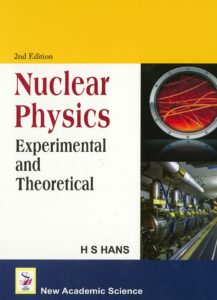
Harnam Singh Hans
(21st Nov., 1922 - 19th March, 2014)
Nuclear Physics
Preface to the Second Edition

The response to the first edition of Nuclear Physics—Experimental and Theoretical has been quite encouraging. The second edition, has been upgraded by adding to each chapter, the latest developments in the subject, especially from 2000-2010. This was obtained by a careful and detailed survey of the research articles in Phy. Review C. from 2000 to 2010, as available to the author. We hope, this makes the book, more suitable for the present readership.
It was interesting to note that because of the availability of a large number of the most modem accelerators in the world, a new culture of collaborative research work has come out, involving in a single paper a large number of authors from different countries of Europe, and of course, USA, Russia, China and India. The number of authors in a single paper ranged from a few to more than fifty. This has allowed, the quality and the complexity of the measurements and calculations, to grow phenomenally.
A chapter, ‘Theory of Nuclear Matter and Finite Nucleus’ (Appendix-A) has been added, at the end, to complete the contents of the book.
The flavour of the reading matter in the book, of course, remains the same. The theoretical part is ‘basic’ to meet the needs of the students, but the experimental part has been brought up-to-date. The subject of nuclear physics—at intermediate and low energies—somewhat follows traditional lines, though recent studies—both theoretical and experimental have added new dimensions. This is especially true of problems in nuclear structure. The interest in studies involving Pre-Equilibrium has continued; while them has been a great increase in nuclear reactions involving heavy ions.
Because of need of nuclear technology, in our general advancement of modem life, the subject of nuclear physics remains quite popular among students. We hope this book will fulfill this need of society.
We thank the publishers for pointing out the reactions of readership of the first edition to bring out this edition in an up-to-date manner.